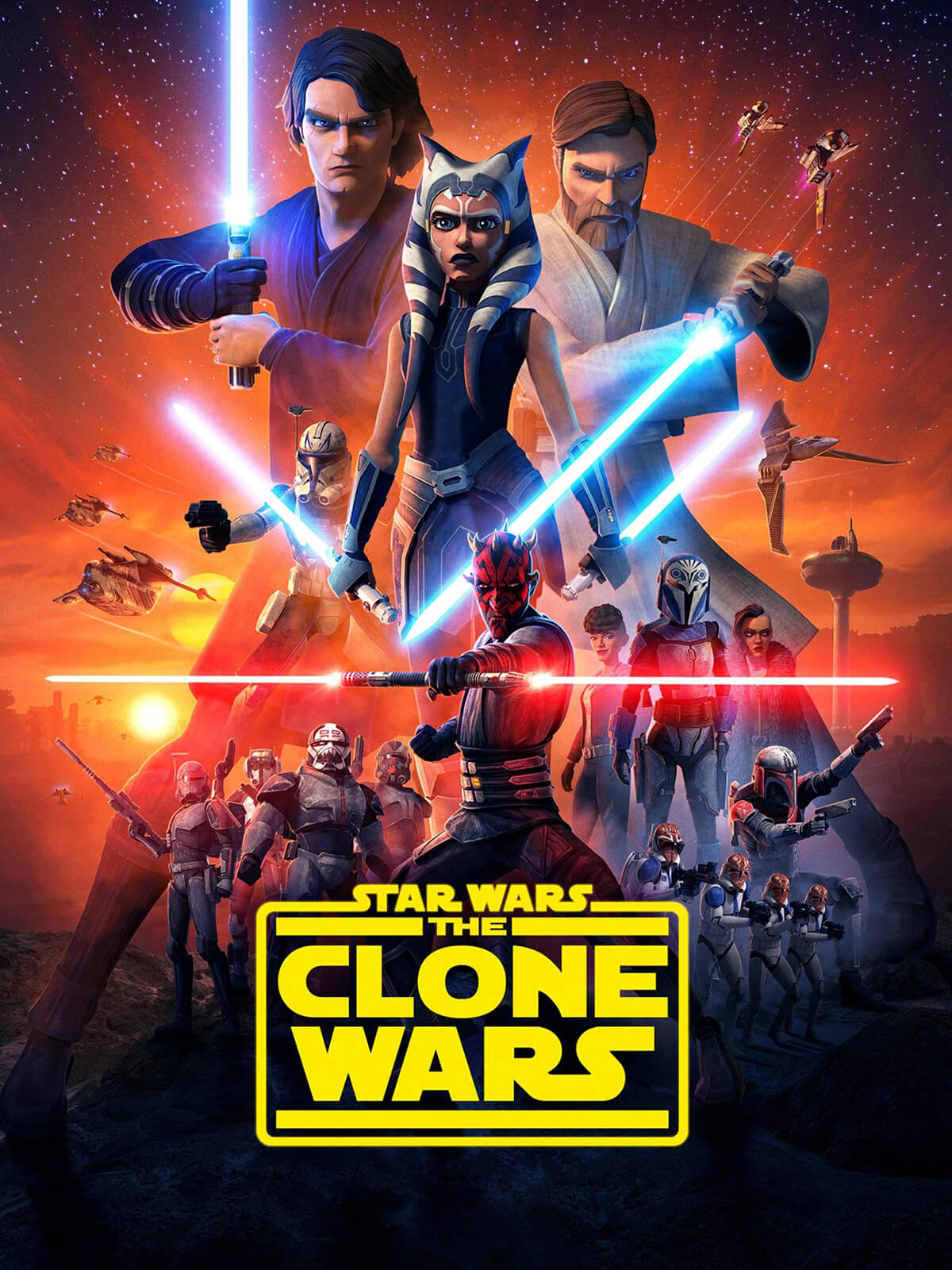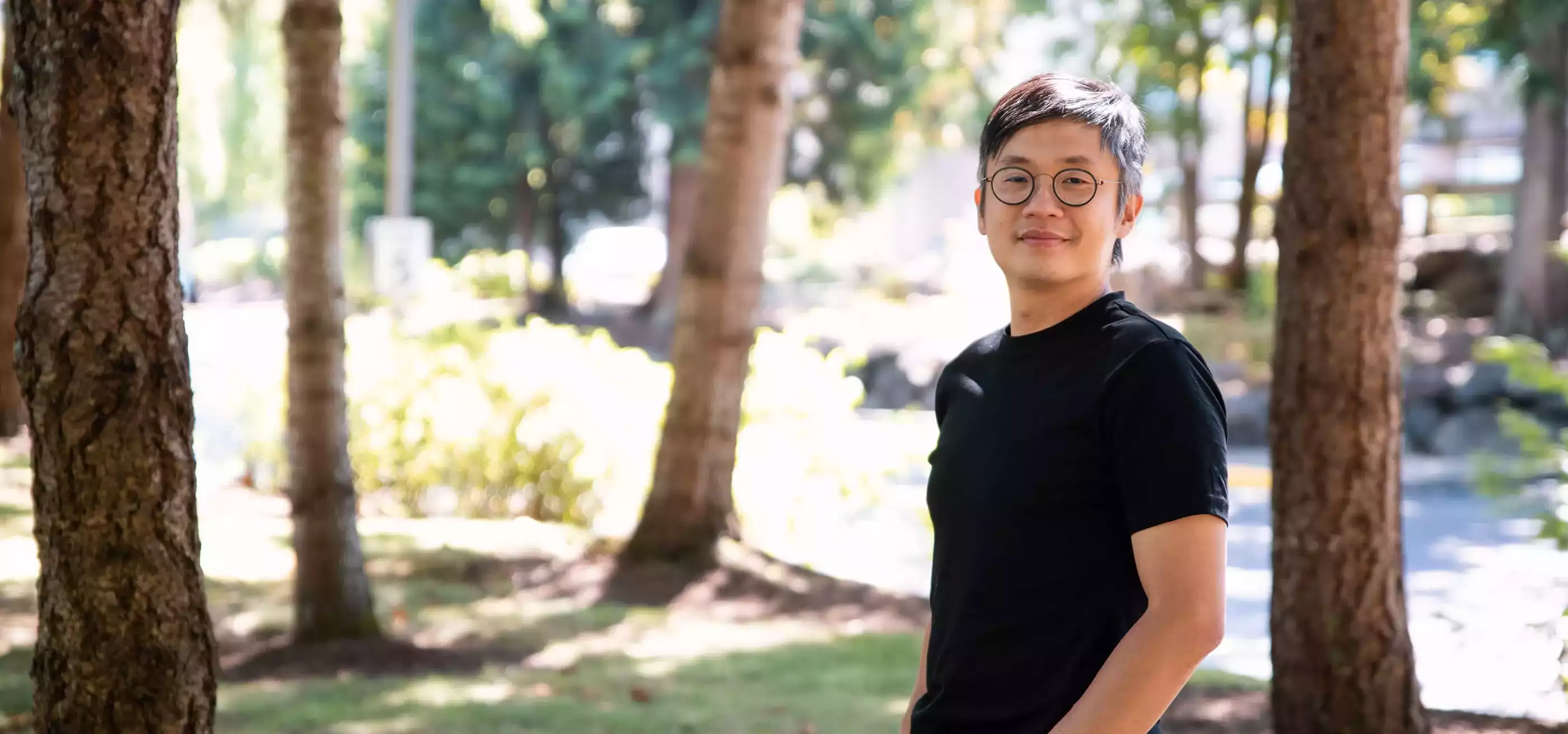DigiPen instructors bring remarkable professional experiences to the classroom. In our Faculty XP series, we’ll zoom in on some of those fascinating career histories with focused Q&As.
If you’re ever looking for YZ Tan, chances are high you’ll find him in class mentoring BFA in Digital Art and Animation students on the finer points of 3D animation. Long before he became DigiPen’s Animation and Production Department chair, Tan was a freshly graduated student himself who, almost by accident, found himself working at the brand new Lucasfilm Singapore, the studio’s first international satellite location.
The Force was strong with Tan, who spent a busy four years there doing just about everything, including character and gameplay animation, 3D modeling, layouts, compositing, and cinematics. His work also spanned both games and TV, with credits on Star Wars: The Force Unleashed and its sequel, Star Wars: The Clone Wars animated series and Nintendo DS games, and remasters of the classic Monkey Island adventure game series. We sat down with Tan to talk through his pre-DigiPen days as a padawan at Lucasfilm.
How did you initially land at Lucasfilm as an animator?
When I think about working at Lucasfilm, it feels like such a long time ago, far, far away…
The funny thing is, I actually didn’t plan on taking the job at the time, because I had just joined Koei Tecmo after six months of job searching in 2006 following some short-term contract work. Almost right after I started, my professor called me and told me that Lucasfilm was coming to Singapore. They were looking for trainees to join LucasArts in San Francisco for a year, and then come back to start the game department at the new Lucasfilm Singapore campus.
All my friends were so excited about Lucasfilm coming to town. They decided, why don’t we all just apply? Again, I really didn’t want a new job! But I decided to join them and do it for fun. They had this entry test that everyone had to take, and then you had to go through multiple selection rounds. Eventually, I got selected, and none of my friends did! So I quit my job after only three months and headed to San Francisco.
Working on such a huge, established universe like Star Wars, were you constantly having to consult reference from the films and other sources?
Yeah, there’s a lot of information out there! We had a Lucasfilm library in Skywalker Ranch for employees only. You go in and they have all these catalogues, books, just everything Star Wars that’s ever been published. Since they don’t plan out the entire universe for the films, a lot of the reference out there is just people who continued to add their own details onto it over the last 40 or so years through product licensing deals. A comics or book company gets a Star Wars license, and they just make a bunch of stuff up that wasn’t in the films.
One of my most precious memories working there is from the first Force Unleashed. I had to make a cinematic layout of the character building a lightsaber. It was an exciting opportunity for me, because at that time, no one had ever seen an exploded view of a lightsaber! The book I went with for reference was actually just a DK Star Wars encyclopedia. That scene ended up being quite a fan favorite.
There was also one time on the same game where I had to do a transport shuttle ship. The reference I got for it was a Hasbro toy catalogue! All I had was this one image of a toy, and I had to make that into a 3D model we could use. Of course, since it was just a Hasbro toy, I had to figure out what the interior should look like on my own.
Did you feel a lot of pressure having the power to shape the Star Wars universe through your work like that?
Not really, to be honest. I didn’t really feel like I had huge expectations heaped on me until I went to a Star Wars convention for the first time. It blew my mind! I was like, “Oh my god, you guys are crazy. I thought I loved Star Wars, but I guess I only like Star Wars, comparatively.”

What was it like working on both The Clone Wars TV show as well as the Nintendo DS games? It seems like a unique opportunity to work on one series across different media.
It was very confusing! The quality of animation between handheld games and TV is very different. On TV you spend a lot of time working on every corner, every detail of the frame. You work to make it as good and smooth as you can, and then it’s done. For games, it’s very different. You might work on one animation for two years! You work on it, you test it, you work on it again, you test it, you leave it alone. Then maybe you come back to it six months later, and by then you can’t even remember working on it originally! It’s a different beast.
Was it exciting seeing your work on TV?
It was cool, but I’m ultimately a gamer. I really enjoy seeing people play my games and that interactivity. When my games were published, I would stand around at game stores by the demo station and pretend I was shopping, just to watch people’s reactions!
I know a lot of your work was on Nintendo DS games, but how did that compare to working on next-gen consoles at the time with the Force Unleashed series?
The unique thing about the DS games is that the resolution was a lot lower. Because it was a lot lower, and we were working on The Clone Wars games, a series that was very stylized, I could get away with a lot. I didn’t have to polish as much, and the turnaround was a lot faster. In the beginning I’d spend all this time trying to add subtle details, but then I’d go to the DS and you couldn’t even see any of it! So you learn to move really quickly. Everything is just lighter and simpler.
For the next-gen consoles it was a lot more tedious, because we were always trying to push the boundaries of the technology. I remember at that time there was a big emphasis on pushing high-fidelity facial animation in games. Unlike with handheld, you spent a lot of time on details, because you can see all of it. We would get hung up fine-tuning the same thing forever. Which is good! When you look at your showreel afterward, you go, “Wow, this looks really good. I put so much time into this.” For handheld, you could ship something after your first pass. For the next-gen consoles, so much more work goes into it after that first pass.
Speaking of low resolution, I know you also worked on the special editions of the first two Monkey Island games at Lucasfilm, reviving old art assets and modernizing them. What was that like?
It was a pain in the butt! People get so excited when they find out I worked on Monkey Island. They’re all, “That’s so awesome. That must have been so fun!” But I always have to go, “Well, wait a minute.” The challenge was the old engine they used on those games, SCUMM. Technically, the remasters used the same exact engine. We changed nothing about it. The issue was we were doing it in the 21st century! Working on Monkey Island was like taking a game art history class.
I would look at some of this old animation, these modular pieces they would make and how they worked, and just have huge respect for people working back in those days. Like, how did they even think to put things together this way? It was amazing how efficient, cheap, and effective the methods they used were. The big challenge for us was that these methods worked because the resolution was so low. You could get away with a lot of tricks you just can’t replicate in high definition.
I was one of two artists who started on the game. At the beginning, they wanted all the new art to be 3D modeled, chopped into pieces, and put into a sprite sheet. I did that for Guybrush and LeChuck, and I was immediately like, “This is really bad. We should stop doing this!” That’s when they brought in more illustrators and concept artists to do hand-drawn 2D frames, which in my opinion looked a lot better.
Are there any lessons you learned from your time at Lucasfilm you try to impart to students now at DigiPen?
A lot of them get really hung up on trying to make their animation perfect at first, and I try to work with them on moving past that mindset, especially with games. Making an animation that plays really well on its own doesn’t mean it’s going to make for a great piece of gameplay animation. I see a lot of students struggle with that! Gameplay animation requires something different.
I also work with them a lot on communication. I try to help them work on things in smaller chunks, checking in a lot for feedback with other people on their team. Students always think they need to get it right, right away. However, professionals check in a lot! All the pros I know do a little bit, then check in, then do a little bit, then check in. Maybe it’s because we’ve been rejected so many times we’ve learned to be wiser! Spending three hours and getting feedback to change something is better than spending 30 hours and having to change everything.
